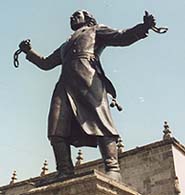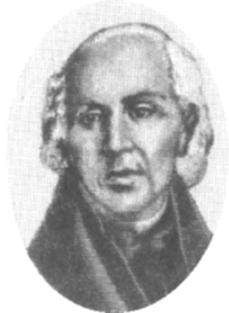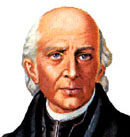This is taken from Mexicoline…
For me the joy is knowing I have stood on the same steps and seen the flags just wish I could have been there to see the parades and tributes!!!!
The History of Mexican Independence
Introduction
In 2010 Mexico will celebrate its 200 years of Independence with national and local public events. The Bicentennial or Bicentenario actually takes in two celebrations: the first being the Bicentennial of two hundred years since Independence (1810) and the second the no less important Centennial of 100 years since Mexican Revolution of 1910.
Mexican Independence Day celebrates the events and people that eventually resulted in independence from Spain, the country that had control over the territory of New Spain, as it was also known then. Fueled by three centuries of oppresion and sparked by a call to revolt by the respected Catholic priest Hidalgo, the first call to arms was made in the village of Dolores, in the state of Guanajuato. The uprising pitted the poor indigenous indians and mixed mestizo groups against the priviledged classes of Spanish descent, and pushed them into a violent and bloody battle for freedom from Spain.
Setting The Stage  Shortly before dawn on September 16, 1810, Miguel Hidalgo y Costilla made a monumentous decision that revolutionized the course of Mexican history. Within hours, Hidalgo, a Catholic priest in the village of Dolores, ordered the arrest of Dolores' native Spaniards. Then Hidalgo rang the church bell as he customarily did to call the indians to mass. The message that Hidalgo gave to the indians and mestizos called them to retaliate against the hated Gachupines, or native Spaniards, who had exploited and oppressed Mexicans for ten generations.
Shortly before dawn on September 16, 1810, Miguel Hidalgo y Costilla made a monumentous decision that revolutionized the course of Mexican history. Within hours, Hidalgo, a Catholic priest in the village of Dolores, ordered the arrest of Dolores' native Spaniards. Then Hidalgo rang the church bell as he customarily did to call the indians to mass. The message that Hidalgo gave to the indians and mestizos called them to retaliate against the hated Gachupines, or native Spaniards, who had exploited and oppressed Mexicans for ten generations.
Although a movement toward Mexican independence had already been in progress since Napoleon's conquest of Spain, Hidalgo's passionate declaration was a swift, unpremeditated decision on his part. "Mexicanos, Viva Mexico!", (Mexicans, long live Mexico!) Hidalgo told the Mexicans who were the members of New Spain's lowest caste. He urged the exploited and embittered Mexicans to recover the lands that was stolen from their forefathers. That he was calling these people to revolution was a radical change from the original revolution plot devised by the Criollos, or Mexican-born Spaniards.  Groups of Criollos across Mexico had been plotting to overthrow the authority of Gachupines who, because of their Spanish birth, had legal and social priority over the Mexican born Criollos. When Joseph Bonaparte replaced King Ferdinand as the leader of Spain, the Criollos recognized a prime opportunity for Mexican sovereignity. The nucleus of this movement was a group of intellectuals in Queretaro led by the Corregidor of Queretaro (state official), his wife and a group of army officers distinguished by the adventurous Ignacio Allende.
Groups of Criollos across Mexico had been plotting to overthrow the authority of Gachupines who, because of their Spanish birth, had legal and social priority over the Mexican born Criollos. When Joseph Bonaparte replaced King Ferdinand as the leader of Spain, the Criollos recognized a prime opportunity for Mexican sovereignity. The nucleus of this movement was a group of intellectuals in Queretaro led by the Corregidor of Queretaro (state official), his wife and a group of army officers distinguished by the adventurous Ignacio Allende.
The Criollos plan for revolution did not originally focus on the manpower of the Mexicans. Instead, the Criollos sought to avoid military confrontation by convincing Criollo army officers to sever their allegiance to the Gachupines. By claiming loyalty to the defeated King Ferdinand, the Criollos aimed to establish Mexico as an independent nation within King Ferdinand's Spanish empire. The Gachupines who claimed authority under Bonaparte's rule would be driven out of Mexico.
Hidalgo had close ties with this group. Approaching sixty years of age, Hidalgo was beloved and greatly respected by Mexicans. Once the dean of the College of San Nicolas at Valladolid in Michoacan (now Morelia), Hidalgo was a well-educated, courageous humanitarian. He was sympathetic to the Indians, which was unusual amongst Mexican clergymen. Against Gachupin law, Hidalgo taught Indians to plant olives, mulberries and grapevines and to manufacture pottery and leather. His actions irritated the Spanish viceroy who, as a punitive measure, cut down Hidalgo's trees and vines.
A Decision Is Made
Gachupines were alerted to the Criollos independence movement by Criollo officers who had refused to join the revolutionary movement, and by a priest who had learned of the plot through a confessional. Hidalgo was among the central figures targeted for arrest on September 13, 1810. The Queretaro Corregidor's wife informed the Criollos of the Gachupines plan. Allende immediately departed from Quertaro to inform Hidalgo.
Allende arrived in Dolores in the early morning hours of September 16. His message forced Hidalgo to make the most signficant decision of his life, a decision which marked the first struggle for Mexican independence and that would distinguish Hidalgo as the national hero of the revolution. The Criollos had not gained enough military alliance to forfeit the Gachupines rule, as the plot had leaked three months before the Criollos target date of December 8.
Hidalgo had three possible options. He could await arrest, flee Dolores or call on the Indian and Mestizo forces. His decision to call the exploited groups to revolution completely changed the character of the revolution, and the movement became a bloody class struggle instead of a shrewd political maneuver.
The Revolution Erupts  When Hidalgo called the Indians to action, he tapped into powerful forces that had been simmering for over three hundred years. With clubs, slings, axes, knives, machetes and intense hatred, the Indians took on the challenge of the Spanish artillery.
When Hidalgo called the Indians to action, he tapped into powerful forces that had been simmering for over three hundred years. With clubs, slings, axes, knives, machetes and intense hatred, the Indians took on the challenge of the Spanish artillery.
When the indian and mestizo forces, led by Hidalgo and Allende, reached the next village en route to Mexico city, they acquired a picture of the Virgin of Guadalupe, the patron saint whose image was of a woman of color. The Virgin of Guadalupe, who was indigenous to Mexico, became the banner of the revolutionary forces as Hidalgo and Allende led the path toward Mexico City and the expulsion of the Gachupines.
Hidalgo later regretted the bloodbath he had incited with his fateful "Cry of Dolores." When he made his hasty decision in the pre-dawn hours of September 16, he had not foreseen the mass slaughter of Spaniards. Before the revolutionary troops descended upon Mexico City, Hidalgo retreated with only a few associates to Dolores, where he would be executed by the Gachupines only a year later. Despite his ambiguity toward the violent class struggle that was the Mexican revolution, Hidalgo is still revered as the father of Mexican independence.
Eleven years of war, decades of despotic Mexican rulers and political unrest proceeded Hidalgo's cry of Dolores. Yet throughout the years of turmoil, El Grito de Dolores, "Mexicanos, viva Mexico," has persevered. Every year at midnight on September 15, Mexicans led by the president of Mexico shout the Grito, honoring the crucial and impulsive action that was the catalyst for the country's bloody struggle for independence from Spain



No comments:
Post a Comment